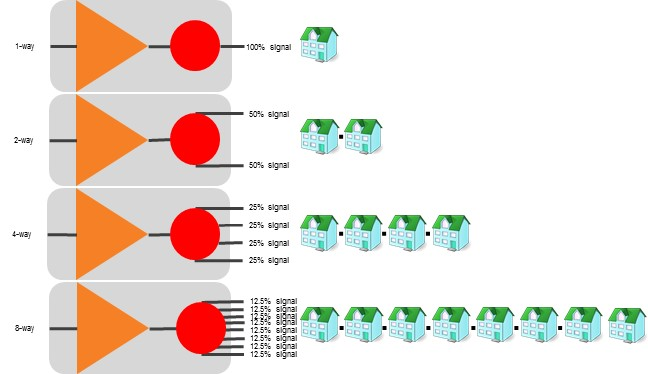Reducing the High Cost of Coaxial Cable
Coaxial cables, commonly called coax cable, are everywhere. You can find them in your office, your house, or just look up at a utility pole when you drive home knowing that a myriad of content is being sent to and from end-users over a coax cable. As a simple, cost effective choice for communications infrastructure, coax has built the foundation for broadcast, community antenna television (CATV), local area network (LAN), closed circuit television (CCTV), broadband, and many more.
So where did coax come from, and more importantly where is it going?
Coax cable, was invented by an English engineer and mathematician named Oliver Heaviside in 1880. “Coaxial” means two or more linear forms sharing the same axis. As time evolved, coax cable soon became one of the most widely used cables for the access or “last mile,” primarily for its ability to carry higher frequencies, meaning more bandwidth, than basic copper wire.
Over the years, both services and service group sizes grew for cable operators. To keep up with growth, cable operators used coaxial distribution amplifiers to cover more subscribers or homes passed, using one-way, two-way, four-way, and eight-way amplifiers.

For the past 20 years one of the most common methods of delivering broadband services for cable operators has been hybrid fiber coax (HFC). In the HFC realm, analog fiber in the backbone carries signals from the headend to a node where coaxial amplifiers pick up the signal for distribution. Typically, the hub to fiber node is 12 to 30 miles and coaxial amplifiers are used every 1000 to 2000 feet thereafter.
Today, cable operators in the US provide an estimated 60% of all home broadband subscribers and pass approximately 93% of homes. But the demand for dedicated bandwidth is outstripping the available spectrum and active coax cable plant is getting very expensive to maintain.
Driving costs down with Fiber Deep
To solve this, cable operators can push digital fiber deeper, reducing service group size, allowing a simpler and lower cost implementation for existing and newer Data over Cable Service Interface Specification (DOCSIS) technologies, and breathing more life back into one of their most valuable assets.
With optical fiber-based digital communications, long gone are the days of cable operators having to calibrate. HFC analog fiber plants are typically calibrated twice a year using a sweep and balance technique, digital fiber deep plants do not need the same calibration.
Digital optics are also simpler to install and operate, as analog optical link budgets are much more complex as signal degrades with distance and fiber quality. Digital optic design has much simpler design rules and can go much farther.
In an analog optics system, each wavelength services one node and one service group. With a digital optics system, 10GbE can service multiple service groups, by statistical multiplexing packets. Multiple service groups could share bandwidth, reducing the number of forward path lasers. Additionally, replacing analog optical links with standard 10GbE optics enables cable operators to leverage lower cost 10GbE transceivers and scaling to 100GbE.
By driving optical fiber deeper, cable operators can improve performance and reliability, increase capacity, become eco-friendlier, along with providing faster download and upload speeds.
Fiber capacity is another concern, as analog optics are also susceptible to cross talk between each wavelength, typically limiting the fiber to 16 wavelengths. Most digital optical systems provide at least 80 wavelengths, providing a 5-fold scaling difference.
Cable operators can consolidate their two fiber plants they own and manage. One is an analog fiber plant for residential and the other is a digital fiber plant for commercial. If both plants were a shared digital plant, cable operators only need to invest and maintain one. Digital fiber can also allow Fiber-to-the-Home (FTTH) and Passive Optical Networks (PON) to be shared over the same fiber.
Pushing fiber deeper enables the current HFC semi-proprietary network that carries DOCSIS and video to become an IP network. As an IP network, that fiber could now carry other services like wireless backhaul and business services, increasing purpose and value.
So where is coax going? The simple answer is that it’s not going anywhere, but cable operators will drive down the high cost of coax by eliminating actives and reducing the service group size on a digital fiber fed passive coaxial distribution cable.
By driving optical fiber deeper, cable operators can improve performance and reliability, increase capacity, become eco-friendlier, along with providing faster download and upload speeds.


